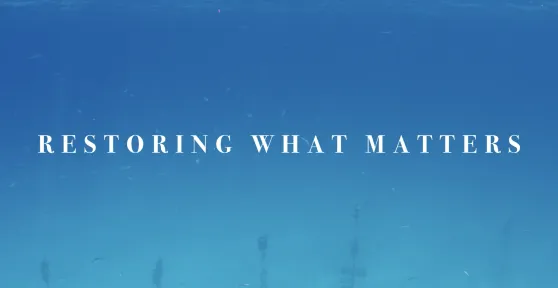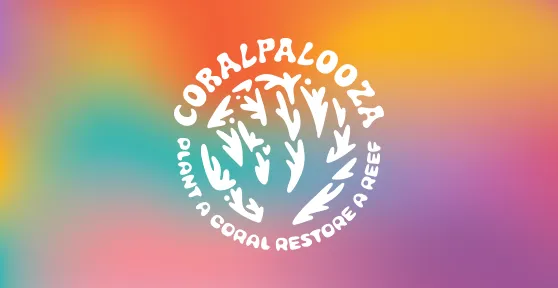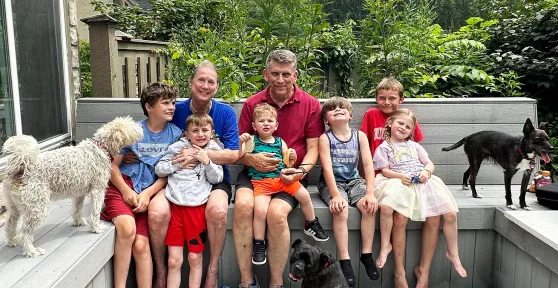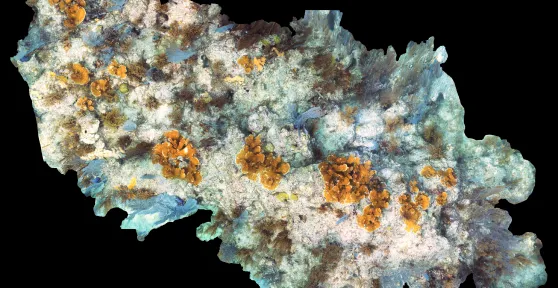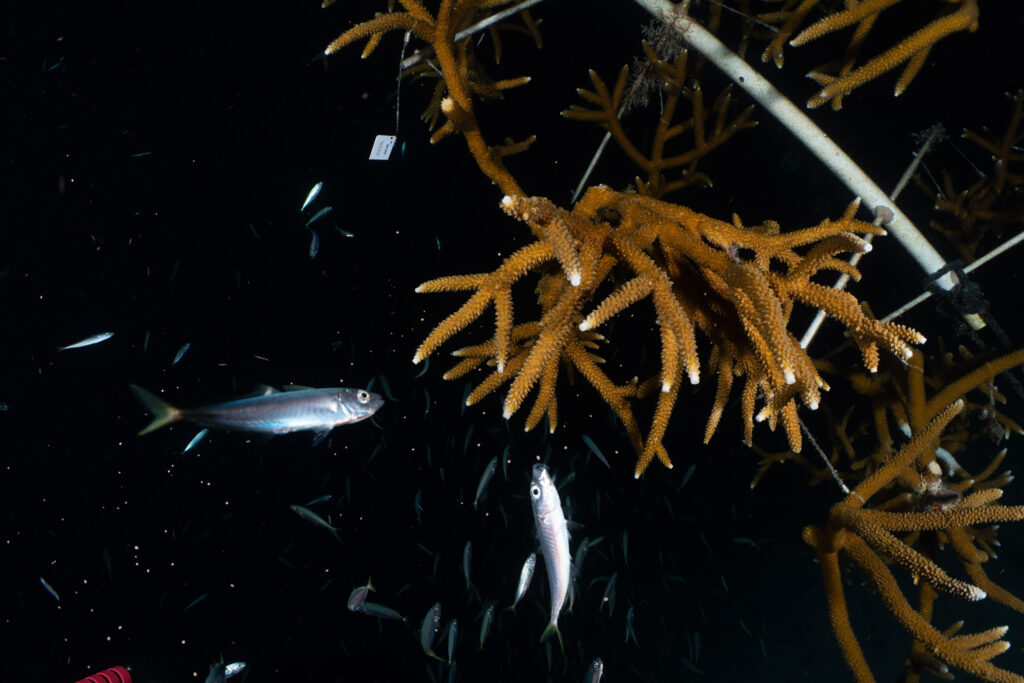
FLORIDA KEYS, August 2025 — Eight leading institutions have converged in the Florida Keys to undertake cutting-edge research to address the most urgent challenge in marine science: how to help corals survive on a rapidly warming planet.
This multi-institutional effort comes during the ongoing Fourth Global Bleaching Event, the most extensive coral crisis in recorded history, which has already impacted more than 84% of the world’s reefs. With ecosystems under mounting pressure, these pioneering experiments — from coral stem cell transplants to heat-tolerant algae inoculations — will provide critical insights into thermal tolerance, resilience, and adaptability.
This work builds on the long-standing cryopreservation partnership between Coral Restoration Foundation™ (CRF™) and SEZARC, which began in 2017 and continues to safeguard critical coral genetic material. Now, these groundbreaking efforts hold the potential for transformative breakthroughs and promise a vital dose of hope for the future of coral reefs.
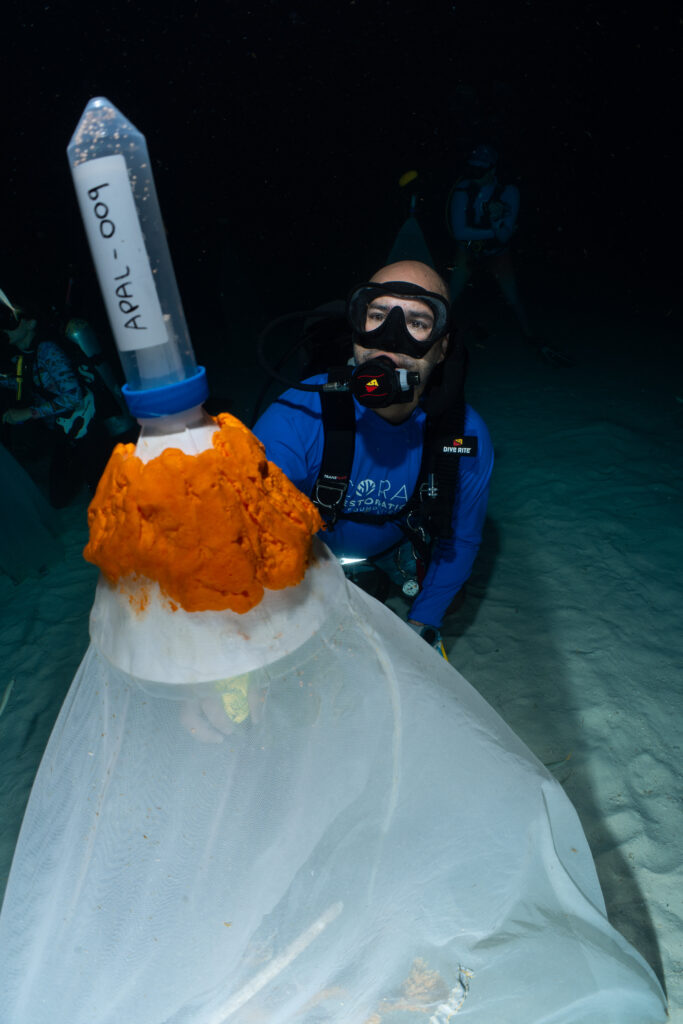
Photo: Coral Restoration Foundation™
This unprecedented collaboration brings together the unique assets of two powerhouse institutions: CRF™ with its abundant coral stock, genetic data, and field infrastructure; and Shedd Aquarium, contributing world-class expertise and the resources of their mobile research vessel, the Coral Reef II – a floating hub of innovation equipped with wet labs and controlled seawater systems, enabling scientists to conduct high-precision experiments at sea.
At the heart of the operation is the CRF™ Tavernier Nursery — the world’s largest open-ocean nursery — home to hundreds of distinct, genotypes of endangered staghorn (Acropora cervicornis) and elkhorn (A. palmata) corals. Within the dedicated “spawning alley,” sexually mature broodstock corals were suspended on structures and tented to collect their gametes. Of the 28 staghorn and 5 elkhorn genotypes under observation, 27 staghorn and one elkhorn genet spawned during this year’s event. In total, gametes collected from 16 staghorn genotypes that spawned across three nights were immediately transferred to the Coral Reef II, where teams from CRF™, Shedd, and partner organizations used them in a series of world-first, at-sea experiments.
At-Sea Fertilization, Larval Rearing, & Settlement

Onboard, CRF™, University of Miami Rosenstiel School of Marine, Atmospheric, and Earth Science, University of Hawai’i Mānoa, and Shedd scientists conducted assisted fertilization using freshly collected gametes. Success was confirmed when embryos were observed on August 13th and 14th, followed by the confirmation of tens of thousands swimming larvae. Around half were transferred back to the CRF™ nursery to be settled on an array of substrates. Developed by Capital Corals, Rebuilding with Nature, and Reef Arches these specially designed surfaces are being tested for their suitability in supporting larval settlement and early growth.
Some of the larvae are also being used to test intervention strategies to bolster heat tolerance and survivorship at early life stages. Rearing larvae at sea shortens the time from gamete release to fertilization, helping overcome bottlenecks faced by land-based systems. By eliminating transport stress on delicate early stages, this approach can accelerate restoration pipelines by streamlining the transition from spawning to outplant-ready corals.
The CRF™ team continues to assist Shedd Aquarium and the Rosenstiel School in collecting and rearing wild spawn from colonies of Orbicella faveolata at Horseshoe Reef, where CRF™ has outplanted more than 8,000 corals across seven species since 2015, including 2,894 just this year.
Heat-Tolerant Algae (Symbiont) Inoculation
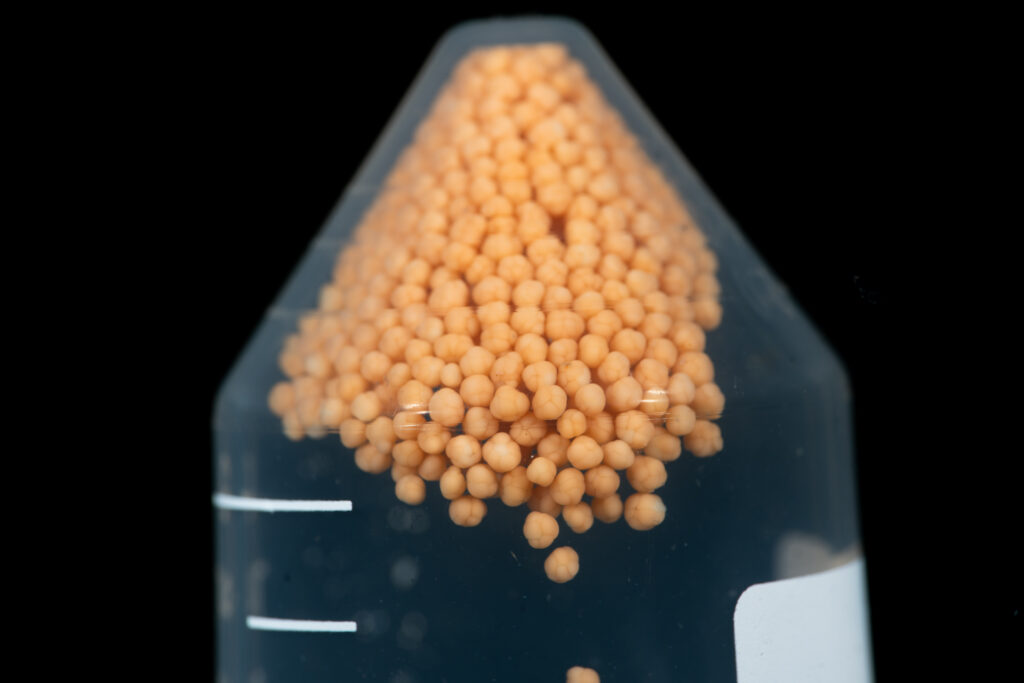
Strengthening corals’ resilience to heat is essential as ocean temperatures continue to climb. Coral bleaching occurs when heat stress causes corals to expel their symbiotic algae, which provide essential energy through photosynthesis. Certain algal species are more resistant.
In a landmark experiment led by Shedd Aquarium and the Rosenstiel School, the CRF™ larvae were inoculated with heat-tolerant algae not typically found in parent colonies, but have been observed at the juvenile stage, under both ambient conditions and elevated temperatures (increasingly common due to ocean warming). This study tests whether pairing larvae with these hardier partners could improve survival during early life stages in marine heatwaves, potentially a key strategy for helping corals withstand increasingly frequent and severe thermal stress.
Heat Stress Screening
Researchers from Shedd Aquarium, the Coral Reef Futures Lab at the Rosenstiel School, and the University of Hawai`i also exposed some coral larvae to a short, controlled treatment of elevated temperatures. This approach identifies individuals with naturally higher tolerance at the larval stage, critical given that spawning occurs at the warmest time of the year, which can then be prioritized for future restoration work. Pinpointing thermally resilient coral genets allows practitioners to make informed selections that improve the long-term survival of restored reefs in warming oceans.
Coral Stem Cell Transplants
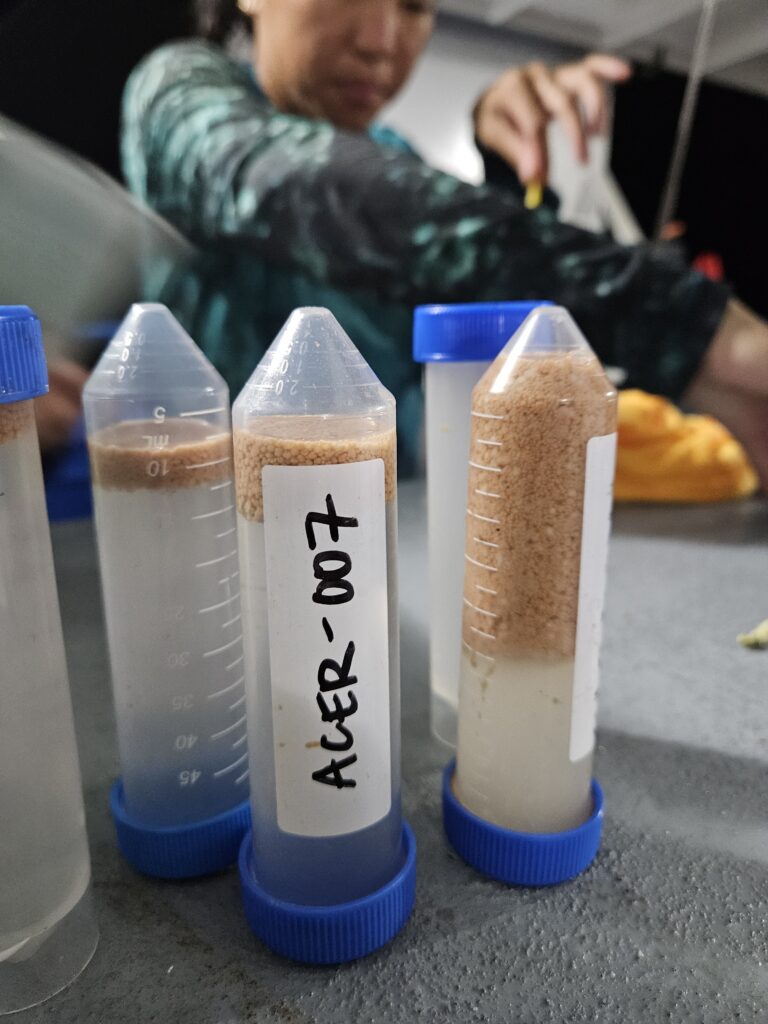
Photo: Coral Restoration Foundation™
For the first time, stem cells derived from coral larvae are being transplanted into adult fragments to test whether they can enhance the recipient’s tolerance to heat stress. Led by the Cnidarian Immunity Laboratory at the Rosenstiel School, this pioneering work applies regenerative biology to coral conservation.
If successful, stem cell transplants could open new pathways for improving resilience, offering a powerful tool in the fight to preserve reef ecosystems in a rapidly warming world.
“For years, we’ve been building the genetic diversity, infrastructure, and expertise needed to give corals a fighting chance,” said Phanor Montoya-Maya, Restoration Program Manager at Coral Restoration Foundation™. “This collaboration is where all that groundwork meets the most innovative science in our field. By bringing our corals and our know-how directly to the cutting edge of experimental research, we’re closing critical knowledge gaps and accelerating real-world solutions. In the face of the greatest threat reefs have ever known, this work is not just about protecting biodiversity — it’s about proving that we still have time to turn the tide.”
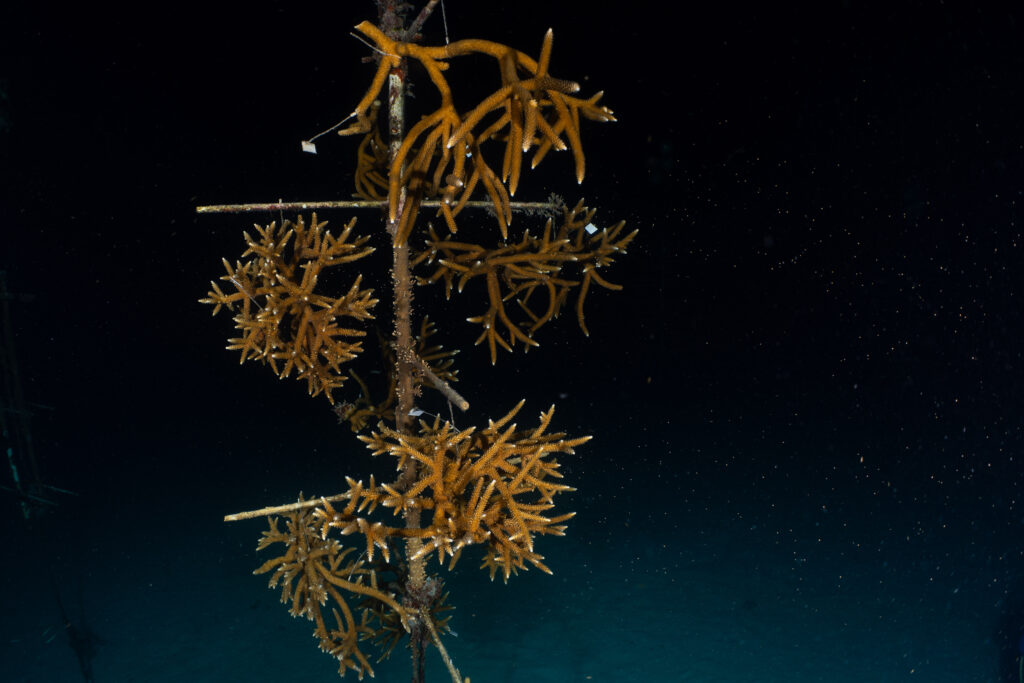
“It may feel like we are throwing everything at the wall on this trip, but that is by design,” said Dr. Shayle Matsuda, research biologist at Shedd Aquarium. “Coral extinction and climate change are some of the most pressing issues facing our planet today, and we need to rapidly explore solutions from all sides if we want to save our oceans. This collaboration is a model of how, by rethinking the way we work together, we can accelerate and magnify our scientific impact.”
_______________________________________________________________________________
Contacts:
Beth Vessels, CRF Director Marketing & Communications: beth@coralrestoration.org
Johnny Ford, Shedd Aquarium Senior Director, Public Relations: jford@sheddaquarium.org
ABOUT CORAL RESTORATION FOUNDATION™
Coral Restoration Foundation™ (CRF™) is the world’s largest non-profit marine conservation organization dedicated to restoring coral reefs to a healthy state, both in Florida and globally. CRF™ develops innovative tools and techniques for large-scale coral restoration, engages and empowers communities, and advances cutting-edge science to protect and revitalize these critical ecosystems.
ABOUT SHEDD AQUARIUM
Shedd Aquarium is a recognized leader in animal care, education, conservation and science that sparks compassion, curiosity and conservation for the aquatic animal world. Every year, Shedd serves as a portal for millions of guests, bringing them eye-to-eye with belugas and bluegills, stingrays and sturgeons, coral reefs, kelp forests and countless other species from around the world. An accredited member of the Association of Zoos & Aquariums (AZA), the organization is an affiliate of the Smithsonian Institution and supported by the people of Chicago, the State of Illinois and the Chicago Park District. www.sheddaquarium.org
